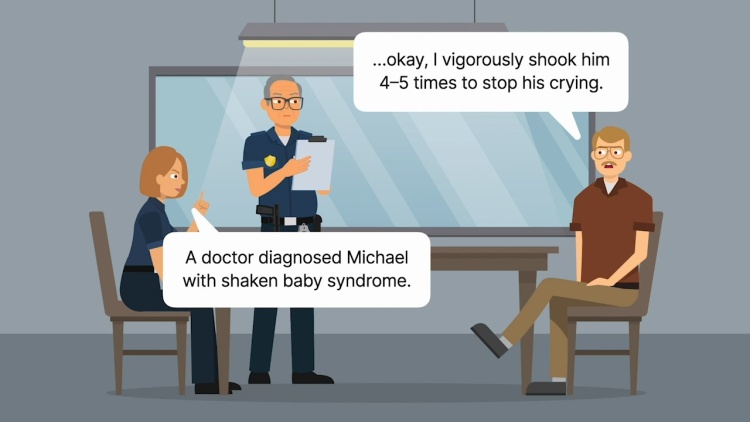People v. Sargent
California Supreme Court
19 Cal. 4th 1206, 970 P.2d 409 (1999)
- Written by Jamie Milne, JD
Facts
Paramedics responded to a 911 call and found Michael Sargent Jr. (Michael), the son of Michael Sargent Sr. (Sargent) (defendant), unresponsive on the apartment floor with blood coming out of his nose and mouth. Michael was five months old but, due to his premature birth, had the neck-muscle development of a four- to six-week-old infant. After emergency medical treatment, Michael survived. Sargent offered different explanations for how Michael was injured. First, Sargent said that Michael had fallen off the couch. Later, Sargent said that Michael had fallen to the linoleum floor while Sargent was throwing Michael in the air to stop his crying. Finally, after being informed that a treating physician had diagnosed Michael with shaken baby syndrome, Sargent said that he had shaken Michael in a car seat four or five times, with Michael’s head losing contact with the seat. Sargent was convicted of felony child abuse under California Penal Code section 273a(1), which penalized willfully inflicting unjustifiable physical pain under conditions likely to produce great bodily harm or death. The court of appeal determined that criminal negligence was required for felony child abuse and that Sargent was not criminally negligent, as there was no evidence that Sargent knew or should have known that shaking a baby could result in extensive injuries. The court of appeal modified the judgment to misdemeanor child abuse. The state appealed to the Supreme Court of California.
Rule of Law
Issue
Holding and Reasoning (Brown, J.)
Concurrence (Mosk, J.)
What to do next…
Here's why 899,000 law students have relied on our case briefs:
- Written by law professors and practitioners, not other law students. 47,000 briefs, keyed to 994 casebooks. Top-notch customer support.
- The right amount of information, includes the facts, issues, rule of law, holding and reasoning, and any concurrences and dissents.
- Access in your classes, works on your mobile and tablet. Massive library of related video lessons and high quality multiple-choice questions.
- Easy to use, uniform format for every case brief. Written in plain English, not in legalese. Our briefs summarize and simplify; they don’t just repeat the court’s language.








